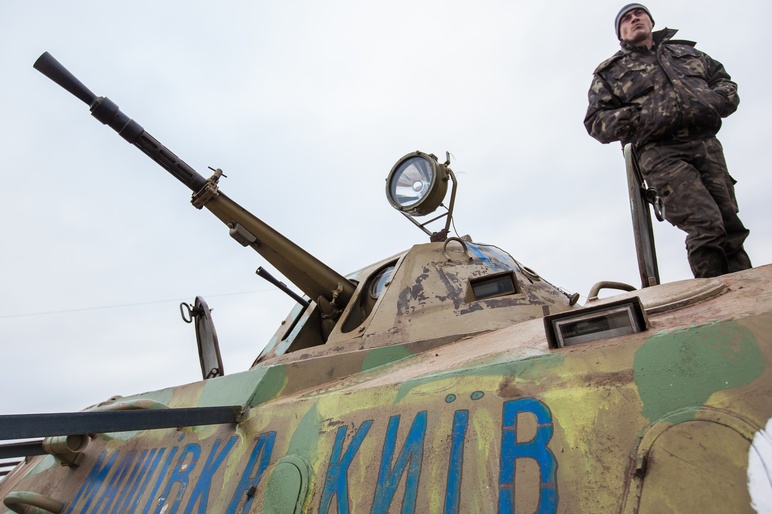Ukraine: The prison population should be included in evacuation plans

As Ukraine faces a renewed military aggression by the Russian Federation, it is important to ensure safety for the most vulnerable groups among its civilian population. One such group is made of the people who find themselves under the control of State authorities and who cannot leave the place of their stay without a court or administrative decision, or specific arrangements: children in dedicated institutions, elderly people in geriatric homes, patients in psycho-neurological institutions or psychiatric hospitals, but also prisoners in various types of law enforcement institutions. Should the armed conflict escalate, these people – whose numbers potentially reach tens of thousands - would not have any chance to promptly depart for a safe zone if left to their own devices.
If recent history is a precedent, there are reasons to be concerned. Back in 2014-2015, when the fighting reached the small village of Chornukhino, in the Donetsk region, the personnel of the penitentiary institution Chornukhinska Correctional Service Column No. 23 escaped without informing the detainees of the impending danger and without giving them any instructions. All the 700 convicts in the penal colony were just left behind, including those with tuberculosis and those who were HIV-positive, and who required medical treatment.
Part of the detainees ran away. Some ended up in minefields and got killed
When the shelling of the colony started - in violation of International Humanitarian Law (IHL), which prohibits attacks on civilian objects -, part of the detainees ran away. Some ended up in minefields and got killed, others were captured by local militias acting as proxies for Russia and were sent to dig trenches and fight for the breakaway “Republics” of Donetsk and Luhansk. Still others managed to get to the checkpoints of the Ukrainian army and were then dispatched to prisons in government-controlled territories.
I learnt all of this from a detainee during a prison visit in the Donetsk region by the National Preventive Mechanism (NPM), in spring 2015. The man had witnessed some of these events firsthand; he had been lucky to survive and get to a Ukrainian checkpoint.
Most of the staff do not know what to do should emergency evacuations be needed
Given this sobering experience, my colleagues at the Association of Ukrainian Human Rights Monitors on Law Enforcement (Association UMDPL), which is part of Ukraine’s NPM, are currently raising the issue with the authorities, reminding them of their legal obligation to take every step needed to protect all vulnerable populations under State control, so as not to repeat past failures. The response from the official Ukrainian authorities has been reassuring, stating that all necessary legal regulations are in place and that the appropriate evacuation commissions have been established.
This official information sounds good. The problem is that, when my colleagues and I visit places of detention as part of the NPM monitoring, the responses we receive from prison staff are much less optimistic.
Most of the staff do not know what to do should emergency evacuations be needed. The provision of transport for prisoners remains the responsibility of local authorities, who – as is understandable – would be primarily concerned with the protection and evacuation of State employees and their families, followed by the rest of the civilian population. The evacuation of places of detention may simply not happen, as was the case in 2014-2015 in the Donbas. At that time, there were 36 facilities, including penitentiary institutions for women and children, in the Donetsk and Luhansk regions. The majority of them - 28 facilities – found themselves in the occupied territory, with up to 15,000 people remaining there.
Based on this experience, the Ukrainian authorities must take urgent measures to include the populations of prisons and other closed institutions in their evacuation plans. This should include informing the personnel of the evacuation procedures from high-risk areas, as well as providing evacuation plans, adequate transport, and logistics for all these groups of people. Additionally, the Ukrainian Parliament Commissioner for Human Rights should exercise permanent parliamentary control over the measures taken by the Government and local self-government bodies to ensure the safety of vulnerable groups who live in closed institutions. Prisoners are civilians. Like any other citizen, they are entitled to the protection of the State, in times of peace like in times of a military emergency.

Vadym Pyvovarov is Executive Director of The Association of Ukrainian Human Rights Monitors on Law Enforcement (Association UMDPL), which is a member of OMCT’s SOS-Torture Network.